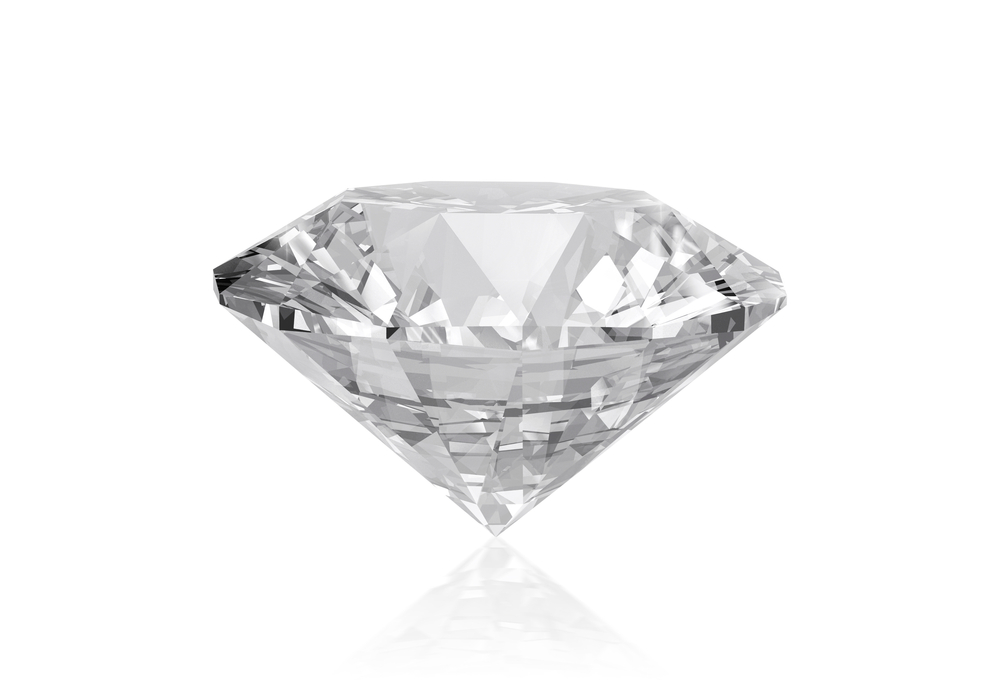One of the common misconceptions about diamonds is that carats are the only factor that determine it’s worth. This is because many people misunderstand the definition of a carat. In gold jewelry, karats refer to what percentage of the jewelry is made with gold. For example 24 karats is pure gold. Carats, on the other hand, are not a measurement of purity. They are a measurement of weight. Even knowing that, you might be inclined to think more carats means more value. A bigger/heavier diamond is definetly worth more right? Well not necessarily. One metaphor jewelers use is that of paintings. A bigger painting is not necessarily more valuable than a smaller painting. What matters is the quality. Because of this gem experts around the world use four unique metrics for measuring the value of a diamond. Those four metrics are known as the 4 C’s.
If you are buying, selling, or pawning diamond jewelry you will want to make sure you understand how these metrics define the value of a diamond.
What Are The Four C's
Clarity
Clarity measures any blemishes on the surface or inside the diamond.
Carats
Carats is a measurement of the size and weight of a diamond
Cut
Cut measures the angle of the diamond's cut and how it reflects light
Color
Color measures any amount of tint to a diamond that effect its overall look.
How Is Diamond Clarity Measured?
The clarity of a diamond measures any blemishes or inclusions in the diamond (some of these can only be seen under magnification). GIA has 11 different grades for clarity.
- FL: This is the best ranking for a diamond. It refers to a flawless diamond. This is a diamond where a professional gem appraiser sees no blemishes on the surface of the diamond or inclusions within the diamond.
- IF: If a diamond only has blemishes on the surface of the diamond it will be referred to as “internally flawless”. This means there are no inclusions within the diamond that will affect its sparkle.
- VVS1 & VVS2: This group is an abbreviation for: “very very small inclusions”. This refers to any diamonds that have difficult-to-see inclusions within the diamond. Likely these inclusions are only noticeable under magnification. VVS1 would be a better rating than VVS2.
- VS1 & VS2: This group refers to a diamond with “very small inclusions”. Once again, under magnification an experienced gem appraiser may notice small inclusions inside the diamond. And like the last category, VS1 is a higher ranking than VS2.
- SI1 & S12: The SI in these abbreviations stands for “slightly included”. These inclusions may be seen with low or no magnification and can affect the shine and sparkle of the diamond in your jewelry.
- I1, I2, I3: Finally, the lowest ratings in clarity is the “included” group. Diamonds in these three categories have inclusions that can be seen without magnification and that will effect your diamonds’ sparkle by preventing light from refracting.
What Does Diamond Carats Mean?
A “carat” is a unit of measurements like ounces, grams, or pounds. A carat is equal to 0.2 grams of a diamond. Theoretically, a one-pound diamond would be over 2200 carats. Once again, carats are not the be all end all factor for the value of a diamond. A large diamond that is full of intrusions, cut improperly, and discolored is going to be less valuable than a small diamond that is of higher quality.
How Is Diamond Cut Measured?
The four c’s were created and standardized by the GIA (Gemological Institute of America) to provide a standard system for measuring the value of a diamond. When measuring cut, a gem appraiser is looking for how light refracts through the diamond. The sparkle of a diamond is directly impacted by the angle of the cut. For instance, if the cut is too deep or too shallow light will not be refracted or reflected properly. Diamond experts measure cut on a scale from “poor” to “excellent”. An excellent cut diamond refracts and reflects almost all of the light that hits it, causing a beautiful sparkling effect.
What Does Color Mean For Diamond Appraisal?
Diamonds can be tinted yellow or brown-ish. To an untrained eye all diamonds probably appear to be clear and sparkling, but a slight tint can sometimes be seen. Color is measured on a scale from D to Z. D refers to a diamond that is virtually colorless, while Z refers to a diamond that has a yellowish or brownish color. The closer a diamond is to the D end of the spectrum the better.
Buy, Sell, & Pawn Diamond Jewelry in NYC
If you are interested in learning more about diamond jewelry evaluation, or would like to discuss pawning , buying, or selling diamond jewelry, contact our team here in the Bronx. At both of our Bronx locations we can help answer your questions about pawning and jewelry evaluation.



